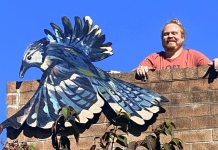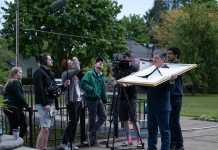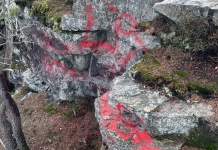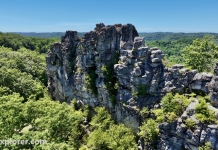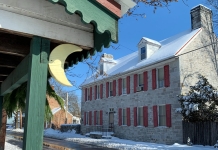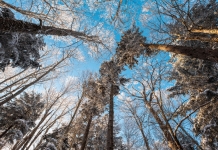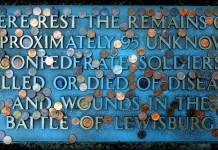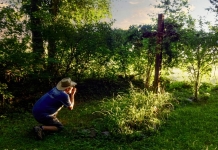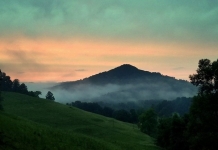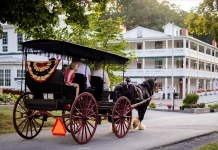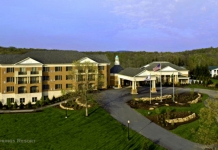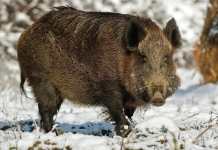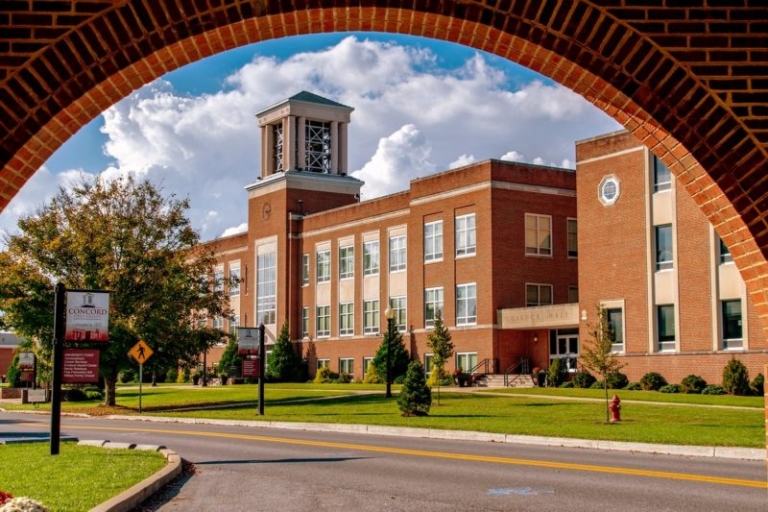
ATHENS, W.Va. — Farmers in the countryside near Concord University in West Virginia sometimes speak of a strange winter phenomenon.
When conditions are just right, the sound of the school's 48-bell carillon, often no more than a distant melody, swells to a thunderous intensity miles from its source. The effect can be haunting.
Caused by air inversion, which magnifies the sound that travels over the fields and woodlands, the circumstances are not precisely understood, though Dr. Joseph F. Marsh, Jr., who gifted the bells to Concord, likely knew of it.
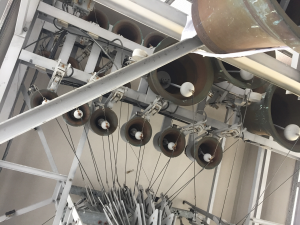
The son of a former Concord president who became a Concord president himself, Marsh was living on Faculty Hill as president emeritus in 1995 when he announced that he would provide the school its most significant gift — financing to build a world-class carillon (pronounced CARE-ILL-AHN) within a bell-tower tall and massive enough to carry its peals across the landscape.
Cast and tuned by Paccard Founderie de Cloches et Carillons, of Annecy, France, and assembled by Bergen Bellfounderies, of Charleston, S.C., the bells were hung in a tower designed by Kreps & Kreps, of Charleston, W.Va., and raised by Swope Construction Co., of Bluefield.
It's been said that Marsh had been moved as a youth by carillons in Europe and later at Dartmouth University, his alma mater. In any case, he was willing to wholly fund the $750,000 monument that now rises from the front of Marsh Hall.
Dedicated in 1997, it's one of the nation's few "concert carillons," qualified as having at least 47 bells and a range of four or more octaves. Its bells range from a 29-pound instrument only seven inches high to a 2.96-ton bourdon more than 36 inches tall.
Concord President Kendra S. Boggess says the carillon continues to be a chief attraction on the campus, inspiring students, faculty, and residents of the town of Athens and attracting visitors from afar.
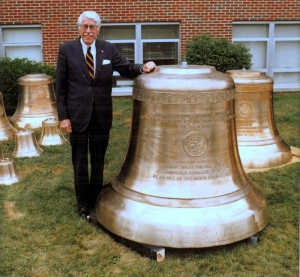
"The Marsh Memorial Carillon has certainly become an icon on the campus at Concord University," Boggess said. "The melodies can be heard all over campus and throughout the town of Athens most days."
Performed regularly throughout the year, concerts led by guest carillonneurs are supplemented by 15-minute daily concerts that regularly attract tourists to the campus and southern West Virginia.
"A lot of folks look forward to the afternoon concerts and the seasonal music the carillon plays, and we have guest carillonneurs, occasionally, that draw visitors to our campus from all over the country."
Traditionally, daily concerts are performed in the afternoons, though visitors should call the school at 800-344-6679 to determine times, which change seasonally.
Witnesses are likely to hear the inversion effect when the temperature in the upper air forms a warm layer against which sound in the cooler, lower air bounces. The effect is usually most notable at night but can occur during the day.
The region's topography, consisting of tablelands dissected by small valleys that may trap cool air nearer the ground, could magnify the effect.
Established in 1872 as a college for teachers at "Concord Church," now Athens, the school was founded by veterans of both the Union and the Confederacy, named "concord" for the ideal of harmony and fellowship.
Today, Concord is one of Mountain State's leading liberal arts universities, renowned for its excellent business, arts and sciences, teacher education, and pre-professional programs.
For more information on touring the region, visit the Mercer County Convention and Visitors Bureau.
Lost Mercer Saltworks is known to only a few locals, adventurers
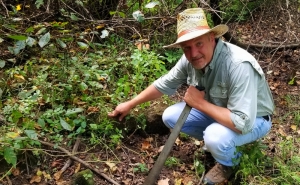
The legend of the Mercer Saltworks may be remembered now by only a few, and its ruins—tumbled stones along an isolated stream—may be known to even fewer. Accessible by a rough trail, it was once among the most important landmarks in the New River Valley. The salt lick there on Lick Creek, less than a mile from the New River, was much visited by Native Americans, who passed their knowledge on to settlers. Read the full story here.

